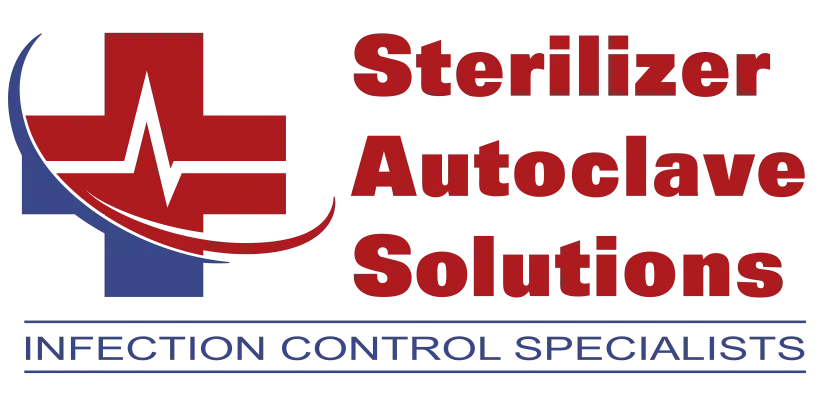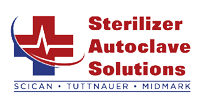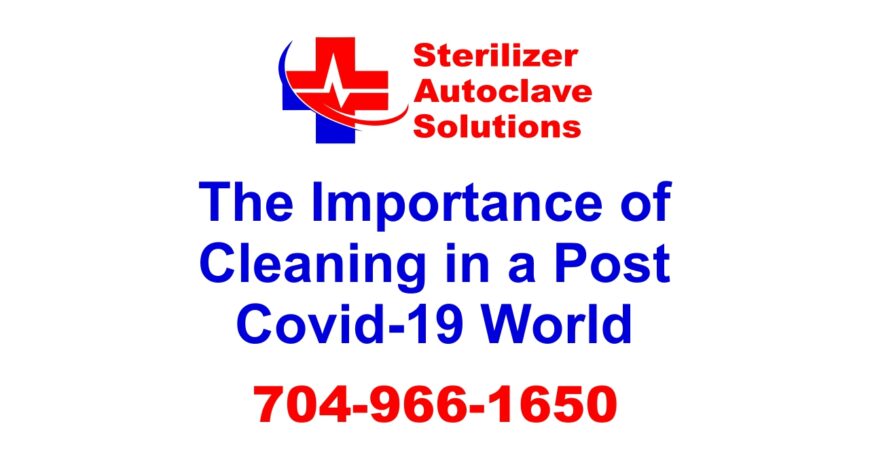The Importance of Cleaning in a Post COVID-19 World Leave a comment
Many articles you can read about COVID-19 may differ in subject, but they all have one common theme. And that is that COVID-19 has dramatically changed the way we live and work. After the lockdown, every business had to drastically change the way they operated. And under strict guidelines set by the government Social distancing became the new norm. Even masks required for entry into facilities started being enforced. But even more importantly, cleaning procedures and processes have been given a drastic overhaul.
Businesses and practices of all kinds have been forced to rethink the way things are cleaned. Everything from the different materials they use, to increasing the quality of inspections. There is even a new labeling system for what kinds of areas need to be tended to most often based on a risk based scale.
With all that and more in mind, in this article we’re going to show you how COVID-19 changed the way we think. And even offer you some product solutions to make sure you can keep your facilities safe. And if you just want to talk to someone for any questions you may have, call our Free Tech Support at 704-966-1650 Option 3.
How COVID-19 Changed the Game
Before COVID-19, everything was different, and it shows especially in the medical industry. Before having to worry every day about a mass influx of patients, supplies were plentiful all around. EVS staff could function without worry around the facilities. Supply training only had to happen annually for the current supply line. And while cleaning and disinfecting were consistent, they were still a bit of an afterthought. At least compared to other things that could’ve been going on. But a major issue was that cleaning and disinfecting were thought to be one in the same.
Then suddenly COVID-19 taught us that things can change in a flash. And now disinfection and cleaning have been properly distinguished and put front and center. The roles of EVS staff have been become more prevalent. Medical supplies have been harder and harder for anyone to get their hands on. And now training has been focused more on the currently available supplies.
On the subject of supplies, supply and demand was, and still subsequently is, one of the main concerns throughout this entire pandemic. And from March to May, sales for wipes went up 144% due to multiple factors such as:
- Areas of increased demand as various parts of the country reopen and close.
- Difficulties obtaining the ingredients for disinfectants.
- Safety regulations
This is also a hinderance for those worried about the results of more and more research being done on the virus. for example, during this same period of time as the shortage, it was relayed that the virus could survive on money and plastics for days on end. Even though it was found out in May that surface transmission was not the virus’ main method of transmission, the point still stood that cleaning protocols needed to be changed.
The New Cleaning Protocols
In May 2020’s iClean conference, two speakers; namely Professor Didier Pittet and Dr. Ruth Carrico shared similar thoughts on how a change was long overdue and a reform was in order. With Pittet “calling for urgent reform in our approach to cleaning and disinfection in hospitals and aged-care homes.” Similarly, Carrico also had this to add: “Reforming hospital and aged-care disinfection system can not only help to continue to manage COVID-19, but also reduce the incidence of other hospital and aged-care facility-acquired infections.”
With these statements in mind, one look at the world would show that these ideals should not fall on deaf ears. Also noted was that hospitals and aged-care facilities were just two of the thousands of facilities that needed to be considered. And the main issue was that it was time to get to work on this problem.
We’re going to mention some things to properly calculate what needs to be done.
How Do Surfaces Transmit Microorganisms?
These types of microorganisms usually transmit via surfaces that are in frequent contact with hands, labeling them as frequently touched areas. The surfaces can become contaminated from anyone like visitors, patients, even staff. Contact with a contaminated surface like this can lead to cross-contamination of yourself, someone else, environmental surfaces, or patient care materials.
What is the difference between cleaning and disinfection?
As mentioned earlier in the article, before the pandemic, the line between cleaning and disinfection became a game of which one would become the buzz-word. COVID-19 put lots of pressure and problems on us, so the differences in the two had to be made clearer than ever.
So we’d like to tell you how they compare.
Cleaning is defined as removing an unwanted substance or material from something. It can range from dirt, infectious agents, blood and other bodily fluids, and the like. However, cleaning is just the process of removing something on a mostly surface level. Like when you clean your countertops of any stray crumbs or debris. Although, quality cleaning specifically involves physical scrubbing to actively remove the unwanted something.
Disinfection on the other hand is the destruction of infectious or pathogenic organisms that can potentially lead to infections or any other health issues. Surface disinfection and disinfectants render bacteria inactive on hard, non-porous surfaces. For surface disinfection, you want to use something like the MBS Simpli Germicidal Wipes .
How We Should Be Cleaning
The new method has been laid out in a preferable system. First, there’s assessing the area in need of cleaning by way of a 3 tier risk factor. With this you need to assess (based on low or high priority) how frequently each area needs to be cleaned. The tiers are as follows:
- Heavily Contaminated: Most vulnerable patients and highly touched surfaces.
- Moderately Contaminated: Less vulnerable patients and low touched surfaces.
- Lightly Contaminated: Less vulnerable patients and low touched surfaces.
A schedule was determined between the high and low touched areas and it states that the higher touch areas should be cleaned at least every 24 hours or when visibly soiled. You have to clean low touch areas weekly, although they are important they’re a lower priority than the areas closer to the patient.
The other important factor is cleaning from low level areas to high levels so that debris falls to the floor and is cleaned last. For example, in a hospital room, you would clean starting at the perimeter of the room and work your way into the area around the patient, then end with cleaning the floor as that’s where everything will have settled by then.
You must always clean the room’s toilet area last. Since it’s the area that is frequently in a state of high contamination, it’s the most reasonable way to tackle that portion.
Microfiber vs Cotton
Before we move on, we’d like to briefly share with you some information that may help you maximize cleanliness. Many companies in the industry recommend microfiber cloth over cotton when cleaning. Microfiber mop heads clean significantly better than normal heads as well.
While microfiber can be damaged by high pH chemicals in some disinfectants, especially chlorine-based ones, they are lots more absorbent. Microfiber cloth becomes more absorbent to dirt and microorganisms because of its positive charge. Some disinfectants are incompatible with microfiber however. The same applies for cotton mop pads. Microfiber pads significantly reduce the microbial load on the floors. Disinfectant greatly effects these results though.
How and Why We Evaluate Cleaning
Just as important as cleaning and disinfecting is evaluating the cleaning job, leaving nothing to chance. The “why” is the simpler out of the two questions. Why we should always evaluate the cleaning is due to the fact that studies have shown only 32% of around 110,000 objects in healthcare facilities get cleaned thoroughly. Obviously we already know about the many dangers that can come from that.
But as to how, there are a couple of different ways. The first and simplest out of them would be visual inspection. EVS staff should always inspect their finished work to make sure that visually, everything is as it should be. This is just to ensure the basic cleaning of course, the other methods get more specific in how they do things.
First, there are Adenosine Triphosphate Bioluminescence Tests. Environmental surface swabs are placed in reagent and the amount of light is read by a luminometer. The result is judged as acceptable or unacceptable based on a scale of RLU.
Next, there are Fluorescent Markers. You can use these to apply markings to a soiled surface. If the mark is visible under a UV light, then that means the surface is not clean and must be gone over again.
Finally there are Cultures. Quantitative environmental cultures like swabs and Rodac plates have also been used as markers of thorough cleaning; anything less than 2.5 cfu/cm2 is considered acceptable.
The Effects of the Materials We Use
This section is a bit shorter but just as important as the rest. While having new ways to clean thoroughly, you can’t clean without materials. Especially when showing off some new equipment for the EVS, or just talking about the new and proper way to handle existing equipment.
When it comes to handling existing equipment, there is a recommended list of things to ensure on all equipment used by EVS. Meaning all equipment used by EVS must:
- Cleaned/Maintained/Documented- per facility policy, and according to the manufacturer’s instructions.
- Automatic chemical dispensers should be checked and calibrated routinely to ensure accuracy and control cost
- Cleaning items must be changed routinely and visually inspected
- Never return mops and cleaning cloths to containers of cleaning solution after use.
- Wipe down handles of mops, dusters or other items with disinfectant after every use.
- Shelf life/expiration date of cleaning products should be noted
But when it comes to newer technology, safety and convenience are the main themes with these new pieces of EVS tech. The following devices that we’ll be telling you about are classified as either Anti-Microbial Surface Coatings Or Continuous Room Disinfection.
Surface Disinfectants (self-disinfecting) are things like:
- Persistent disinfectants such as copper and silver
- Others: Altered topography (micro-patterned), polycationic and light-activated antimicrobial surfaces.
- Bacteriophage-modified surfaces
Surface Disinfection (remote or hands-free) are things like:
- High-intensity narrow-spectrum visible light (405nm)
- UV-C irradiation (424nm)
- Low dose continuous hydrogen peroxide
- Ozone mists/Vaporized hydrogen peroxide in misters and sprayers
Final Thoughts
We wrote this article to give you insight into some of the changing issues and advancements made toward better safety. Please remember that there is always more research and thought going into everyday cleaning and disinfecting processes in medical facilities. We believe the best thing we can all do is to keep up to date with the new technologies being utilized, as well as new cleaning protocols in the workplace. Knowing and applying this information will help provide ease of use, a new layer of safety, and give you some peace of mind moving forward.
As always if you have any questions about this process or anything else please feel free to contact us and take advantage of our “FREE TECH SUPPORT.”
We also offer FREE VIRTUAL TECH SUPPORT to “See and Talk” with a “Real Time Live Technician” for any problems you may be in need of help with.
You can also use our “FREE MAINTENANCE PROGRAM”. Take the guesswork and worrying about what unit is due for maintenance and which maintenance cycle it is time for. We will keep track of all your autoclaves and let you know when it’s time for anything.
Here’s a list of disinfection products that we have available:
MBS Germicidal Wipes Available Here.
Optim 33TB Wipes Available Here.
PDI’s Disinfection Products Available Here.
Rejuvenate’s Disinfection Products Here.


